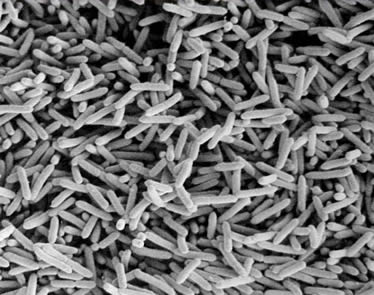
Acidophiles can be found in conditions of acidic pH. Pictured here is an acidic mud pot in Yellowstone Park, which contains the acidophile Sulfolobus acidocaldarius. Found on http://www.daviddarling.info/encyclopedia/A/acidophile.html
Acetobacter aceti is an example of an acidophile that has proteins that have been forced to develop acid stability. This organism has an acidified cytoplasm which forces the proteins to evolve this way. Acetobacter species have the ability to convert ethanol to acetic acid in the presence of oxygen. It's commercial uses can vary. Acetobacter species are known to be used in the production of vinegar, during which ethanol is intentionally converted into acetic acid in wine, and the maturation of certain beers, during which they are intentionally used to acidify beer. However, acetobacter have the potential to destroy wine they infect by producing an overabundance of acetic acid or ethyl acetate, both of which can cause the wine to be unpalatable.

Acetobacter used to produce vinegar and the acid in beer. Found on http://indokombucha.wordpress.com/2009/12/29/scoby/
Sources:
http://en.wikipedia.org/wiki/Acetobacter
http://microbewiki.kenyon.edu/index.php/Acetobacter
http://library.thinkquest.org/CR0212089/acid.htm
http://en.wikipedia.org/wiki/Acidophile_(organisms)
No comments:
Post a Comment